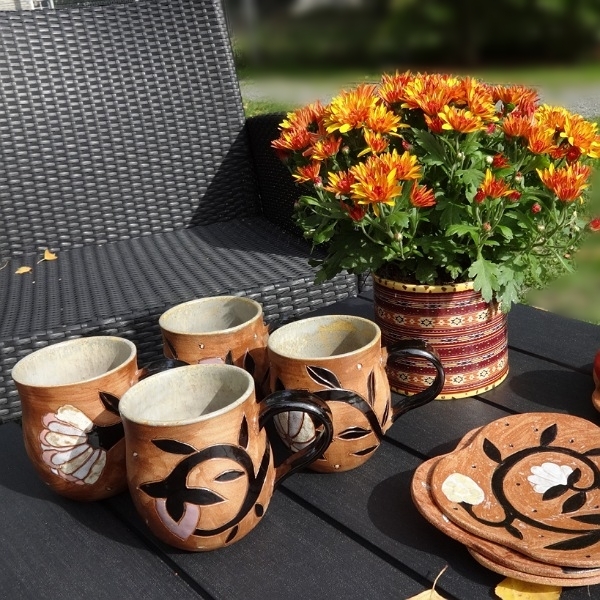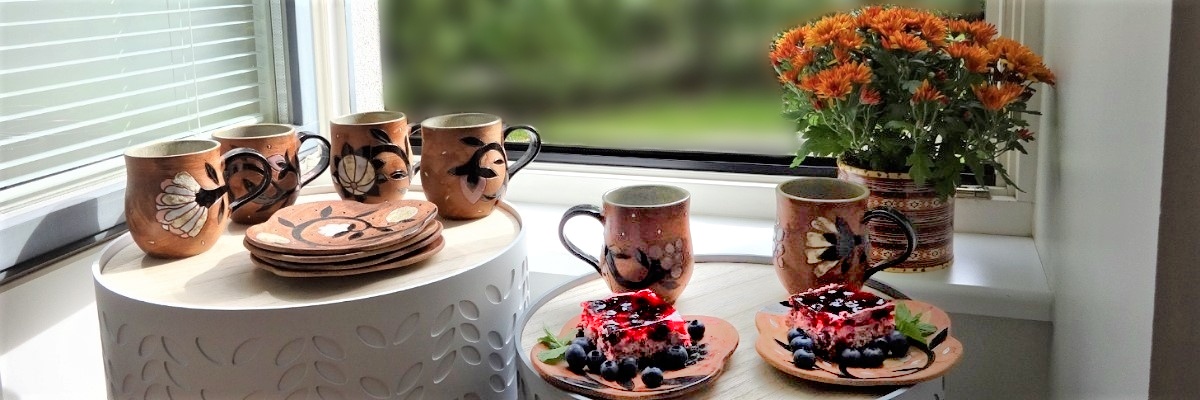
How are ceramics made?
How are ceramics made?
We visited the studio of the potter Karin Kalman and took a closer look at how the pottery is made.
1.Clay preparation
Clay is natural resource that is mined from underground. The extracted clay is dried, cleaned and sieved through sieves of different densities. In order to obtain a clay mass suitable for the production of ceramics, various additives are mixed into the clay ore and the moisture content of the molding composition is adjusted. It is kneaded well to obtain a good and even molding compound.
Did you know that …
clay can be very different in colour depending on its composition? For example, there are brown, red, green, blue and yellow clays.
2.Forming a clay object
A uniform clay mass with the right moisture content can be formed. There are many different techniques for obtaining a shaped object – molding, turning, clay sheet molding, casting, etc. Due to the plasticity and formability of the clay, it is possible to create very different shapes.
3.Drying
When the object is ready to be molded, it must be dried. Clay items are dried slowly. Both room temperature and humidity must be monitored. If the clay is dried too quickly (too warm and dry room), stresses are created in the objects and they can crack. Depending on the size of the object and the wall thickness, an average of 2-5 days is calculated for drying the objects. When dried, the clay shrinks. Dried clay is very delicate and must be handled with care. Until the dried clay is burned, it can be converted back to clay mass by immersing it in water.
4.Pre-burning
As the dried clay is very delicate, it is first burned at 940˚C, the burning cycle lasts 8-9 hours. At this temperature, irreversible changes take place in the clay: organic components, carbon and sulfur burn out of the clay, and the structure of the clay becomes stronger and more stable and is no longer soluble in water. After pre-burning, the clay article is structurally porous and water-absorbent, which facilitates its glazing.
5.Glazing
Once the object has been pre-burned, it can be glazed. Glazes are substances that, at high temperatures, melt into a glassy layer on the surface of the object. The glazes are applied to the pre-burned object in different ways – with a brush, by spraying or dipping the object into the glaze. The bottom of the object is left unglazed so that the object does not stick to the oven plate during glaze firing.
6.Glaze burning
Glaze burning is the last step in the production of ceramics. At high temperatures (the burning temperature varies according to the type of clay and the glaze), final changes take place in the structure of the clay, as a result of which the clay thickens completely and forms a strong stone-like body. At this heat, the glazes also melt into a glassy layer on the surface of the object. During the glaze burning, the items shrink by 8-9%, porcelain up to 16%.
Ceramic objects are burned at different temperatures depending on the type of clay:
low heat clays are usually 900-1080˚C
medium heat clays 1200˚C
high heat clays 1200-1260˚C and hard field porcelain up to 1400˚C
Time of completion of the ceramic article
The ceramic object made in the studio is handmade from start to finish and is the result of a long process. It takes 1-3 weeks an average to complete one item, depending on the type and size of the item. Each object is a unique result of the artist`s creative work.
Special properties of clay
- Clay can regulate humidity by keeping it close to 50%.
- Clay has a scientifically proven ability to clean the air – just as plants are able to clean the air, clay can do the same.
- Clay is antibacterial, antistatic, inhibits mold formation and neutralizes bad odors and harmful substances.
- Clay is also used in health care and cosmetics, as clay has the ability to bind toxic and other harmful substances.
- Clay stores heat, food/ drinks on clay dishes stay warm for a long time.
- High heat objects burned at the right temperature are fire and acid resistant.
- Clay objects are durable, as indicated by archaeological finds.
Impact of clay use on the environment
- Clay is usually located close to the ground and is therefore easy to extract. No complex technological equipment is required for clay mining and the ecological footprint remains small.
- Clay is a local material and is found in almost every corner of the world. By using local clay, we save on transport costs in terms of both nature and money.
- Clay production requires little energy. Simple technology is used for both excavation and processing.
- Production does not generate hazardous waste.
- Clay items last long time. This has been proven by historical finds.
- Unburned clay is reusable – we take it from the ground and give it back.
We thank the ceramicist Karin Kalman, who received us in her studio and took a closer look at the completion of the ceramics!
You can get acquainted with the ceramics offered in Kingisalong here:
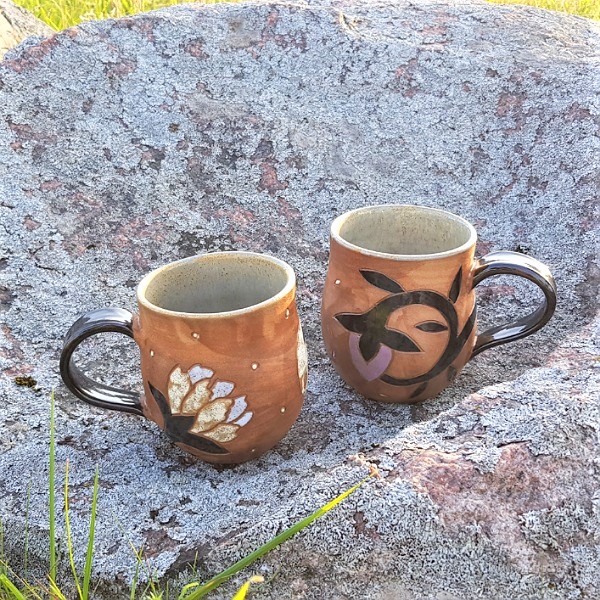
CERAMIC MUG
Author: Karin Kalman
Enjoy delicious coffee drinks, healing teas or hot cocoa.
Each mug has a different design.
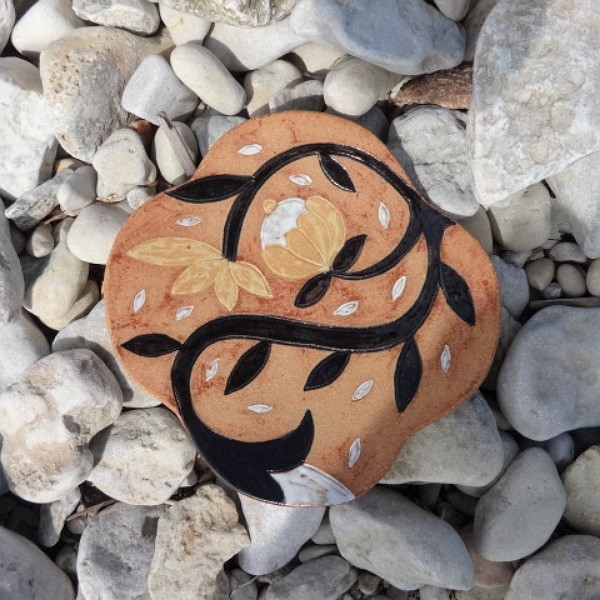
CERAMIC PLATE
Author: Karin Kalman
Serve cakes, ice cream, various desserts or snacks.
Each plate is unique.
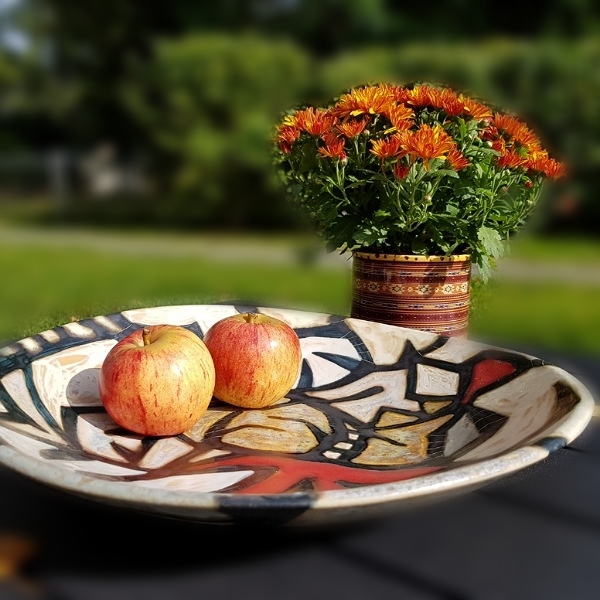
CERAMIC TRAY
Author: Eva Berg
The tray is suitable for serving different fruits and sweets.
Adds uniqueness to any interior.
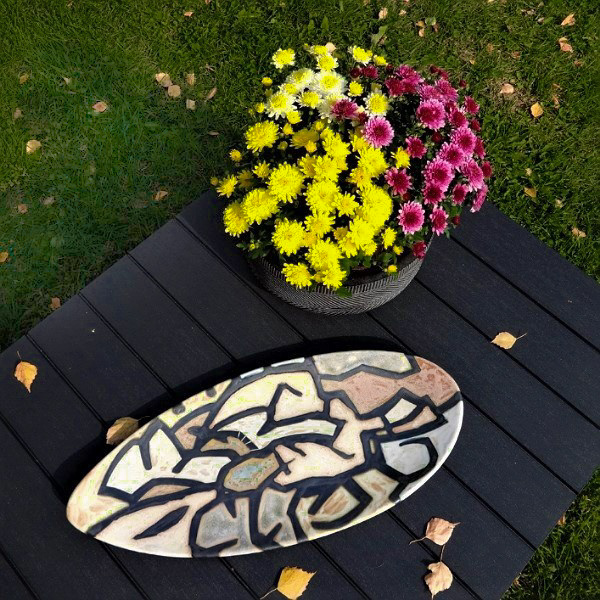
CERAMIC PLATTER
Author: Eva Berg
Several serving options – snacks, hot dishes, fruits, sweets.
Reminiscent of a boat or windsurf – create your own message with the product.
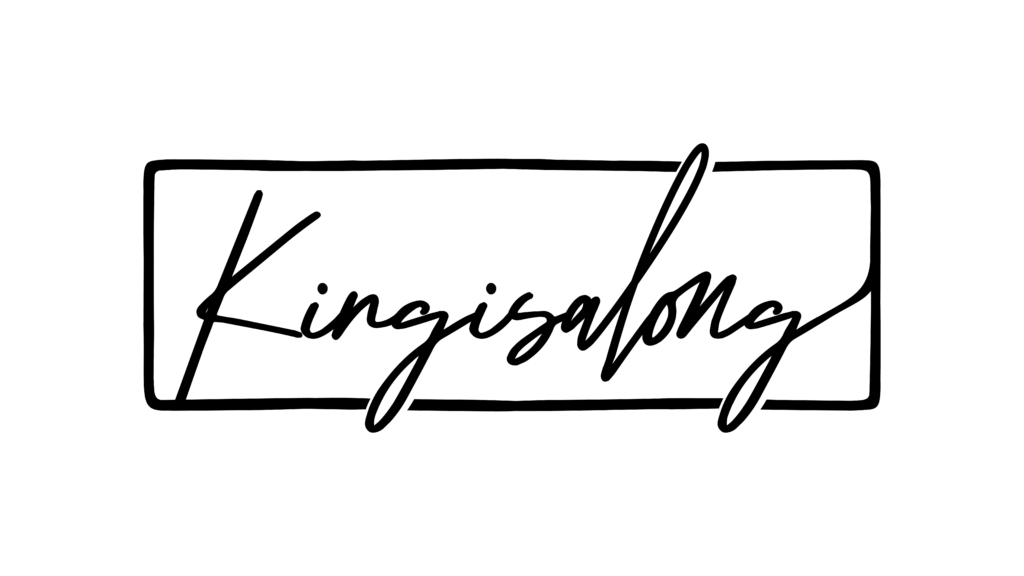
Used sources:
“What is clay?”, www.uku.eu
“Clay mining and processing”, Technology in ceramics I www.tehnolkeram1.weebly.com
“How pottery is made?”, www.loovuspood.ee
